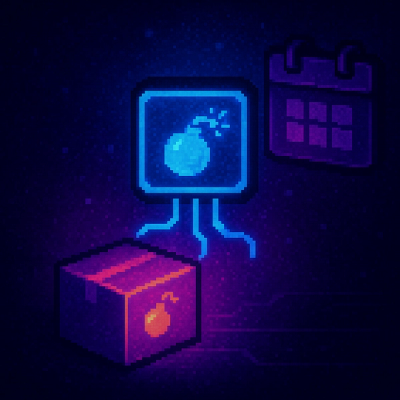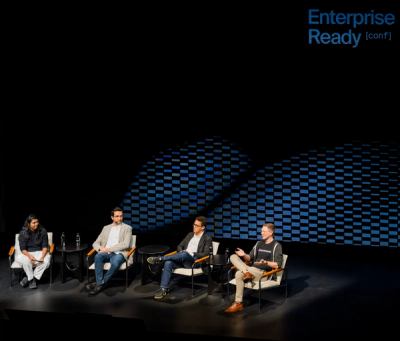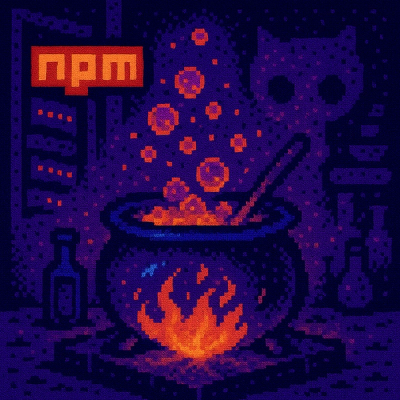
Research
/Security News
9 Malicious NuGet Packages Deliver Time-Delayed Destructive Payloads
Socket researchers discovered nine malicious NuGet packages that use time-delayed payloads to crash applications and corrupt industrial control systems.
@patternfly/focus-trap
Advanced tools
Trap focus within a DOM node.
There may come a time when you find it important to trap focus within a DOM node — so that when a user hits Tab or Shift+Tab or clicks around, she can't escape a certain cycle of focusable elements.
You will definitely face this challenge when you are trying to build accessible modals.
This module is a little, modular vanilla JS solution to that problem.
Use it in your higher-level components. For example, if you are using React check out focus-trap-react, a light wrapper around this library. If you are not a React user, consider creating light wrappers in your framework-of-choice.
When a focus trap is activated, this is what should happen:
Tab and Shift+Tab keys will cycle through the focus trap's tabbable elements but will not leave the focus trap.Escape key will deactivate the focus trap.When the focus trap is deactivated, this is what should happen:
For more advanced usage (e.g. focus traps within focus traps), you can also pause a focus trap's behavior without deactivating it entirely, then unpause at will.
npm install focus-trap
You can also use a UMD version published to unpkg.com as dist/focus-trap.js and dist/focus-trap.min.js.
IE9+
Why?
Because this module uses EventTarget.addEventListener().
And its only dependency, tabbable, uses a couple of IE9+ functions.
import { createFocusTrap } from 'focus-trap'; // ESM
const { createFocusTrap } = require('focus-trap'); // CJS
focusTrap = createFocusTrap(element[, createOptions]);
Returns a new focus trap on element (one or more "containers" of tabbable nodes that, together, form the total set of nodes that can be visited, with clicks or the tab key, within the trap).
element can be
document.querySelector() to find the DOM node); orA focus trap must have at least one container with at least one tabbable/focusable node in it to be considered valid. While nodes can be added/removed at runtime, with the trap adjusting to added/removed tabbable nodes, an error will be thrown if the trap ever gets into a state where it determines none of its containers have any tabbable nodes in them and the
fallbackFocusoption does not resolve to an alternate node where focus can go.
createOptions:
document.querySelector() to find the DOM node), or a function that returns a DOM node.<div> to receive focus if the popover's content includes no tabbable elements. Make sure the fallback element has a negative tabindex so it can be programmatically focused. The option value can be a DOM node, a selector string (which will be passed to document.querySelector() to find the DOM node), or a function that returns a DOM node.true. If false, the Escape key will not trigger deactivation of the focus trap. This can be useful if you want to force the user to make a decision instead of allowing an easy way out.false. If true, a click outside the focus trap will deactivate the focus trap and allow the click event to do its thing. This option takes precedence over allowOutsideClick when it's set to true.true, a click outside the focus trap will not be prevented, even when clickOutsideDeactivates is false. When clickOutsideDeactivates is true, this option is ignored (i.e. if it's a function, it will not be called). Use this option to control if (and even which) clicks are allowed outside the trap in conjunction with clickOutsideDeactivates: false.true. If false, when the trap is deactivated, focus will not return to the element that had focus before activation.document.querySelector() to find the DOM node), or a function that returns a DOM node.true, no scroll will happen.true. Delays the autofocus when the focus trap is activated. This prevents elements within the focusable element from capturing the event that triggered the focus trap activation.Activates the focus trap, adding various event listeners to the document.
If focus is already within it the trap, it remains unaffected. Otherwise, focus-trap will try to focus the following nodes, in order:
createOptions.initialFocuscreateOptions.fallbackFocusIf none of the above exist, an error will be thrown. You cannot have a focus trap that lacks focus.
Returns the focusTrap.
activateOptions:
These options are used to override the focus trap's default behavior for this particular activation.
createOptions.onActivate. null or false are the equivalent of a noop.Deactivates the focus trap.
Returns the focusTrap.
deactivateOptions:
These options are used to override the focus trap's default behavior for this particular deactivation.
createOptions.returnFocusOnDeactivate.createOptions.onDeactivate. null or false are the equivalent of a noop.Pause an active focus trap's event listening without deactivating the trap.
If the focus trap has not been activated, nothing happens.
Returns the focusTrap.
Any onDeactivate callback will not be called, and focus will not return to the element that was focused before the trap's activation. But the trap's behavior will be paused.
This is useful in various cases, one of which is when you want one focus trap within another. demo-six exemplifies how you can implement this.
Unpause an active focus trap. (See pause(), above.)
Focus is forced into the trap just as described for focusTrap.activate().
If the focus trap has not been activated or has not been paused, nothing happens.
Returns the focusTrap.
Update the element(s) that are used as containers for the focus trap.
When you call the function createFocusTrap, you pass in an element (or selector), or an array of elements (or selectors) to keep the focus within. This method simply allows you to update which elements to keep the focus within.
A use case for this is found in focus-trap-react, where React ref's may not be initialized yet, but when they are you want to have them be a container element.
Returns the focusTrap.
Read code in demo/ and see how it works.
Here's what happens in default.js (the "default behavior" demo):
const { createFocusTrap } = require('../../dist/focus-trap');
const container = document.getElementById('default');
const focusTrap = createFocusTrap('#default', {
onActivate: function () {
container.className = 'trap is-active';
},
onDeactivate: function () {
container.className = 'trap';
},
});
document
.getElementById('activate-default')
.addEventListener('click', function () {
focusTrap.activate();
});
document
.getElementById('deactivate-default')
.addEventListener('click', function () {
focusTrap.deactivate();
});
Only one focus trap can be listening at a time. If a second focus trap is activated the first will automatically pause. The first trap is unpaused and again traps focus when the second is deactivated.
Focus trap manages a queue of traps: if A activates; then B activates, pausing A; then C activates, pausing B; when C then deactivates, B is unpaused; and when B then deactivates, A is unpaused.
The focus trap will work best if the first and last focusable elements in your trap are simple elements that all browsers treat the same, like buttons and inputs.**
Tabbing will work as expected with trickier, less predictable elements — like iframes, shadow trees, audio and video elements, etc. — as long as they are between more predictable elements (that is, if they are not the first or last tabbable element in the trap).
This limitation is ultimately rooted in browser inconsistencies and inadequacies, but it comes to focus-trap through its dependency Tabbable. You can read about more details in the Tabbable documentation.
You can't have a focus trap without focus, so an error will be thrown if you try to initialize focus-trap with an element that contains no tabbable nodes.
If you find yourself in this situation, you should give you container tabindex="-1" and set it as initialFocus or fallbackFocus. A couple of demos illustrate this.
Because of the nature of the functionality, involving keyboard and click and (especially) focus events, JavaScript unit tests don't make sense. After all, JSDom does not fully support focus events. Since the demo was developed to also be the test, we use Cypress to automate running through all demos in the demo page.
See CONTRIBUTING.
In alphabetical order:
David Clark 💻 🐛 🚇 ⚠️ 📖 🚧 | Stefan Cameron 💻 🐛 🚇 ⚠️ 📖 🚧 | Nate Liu ⚠️ | Sadick 💻 ⚠️ 📖 | Michael Reynolds 🐛 | Sean McPherson 💻 📖 | Dependabot 🚧 |
Slapbox 🐛 | Benjamin Parish 🐛 | Scott Blinch 📖 | Clint Goodman 💻 📖 💡 ⚠️ | Zioth 🤔 🐛 |
4.0.0
FAQs
Trap focus within a DOM node.
We found that @patternfly/focus-trap demonstrated a not healthy version release cadence and project activity because the last version was released a year ago. It has 12 open source maintainers collaborating on the project.
Did you know?

Socket for GitHub automatically highlights issues in each pull request and monitors the health of all your open source dependencies. Discover the contents of your packages and block harmful activity before you install or update your dependencies.

Research
/Security News
Socket researchers discovered nine malicious NuGet packages that use time-delayed payloads to crash applications and corrupt industrial control systems.

Security News
Socket CTO Ahmad Nassri discusses why supply chain attacks now target developer machines and what AI means for the future of enterprise security.

Security News
Learn the essential steps every developer should take to stay secure on npm and reduce exposure to supply chain attacks.